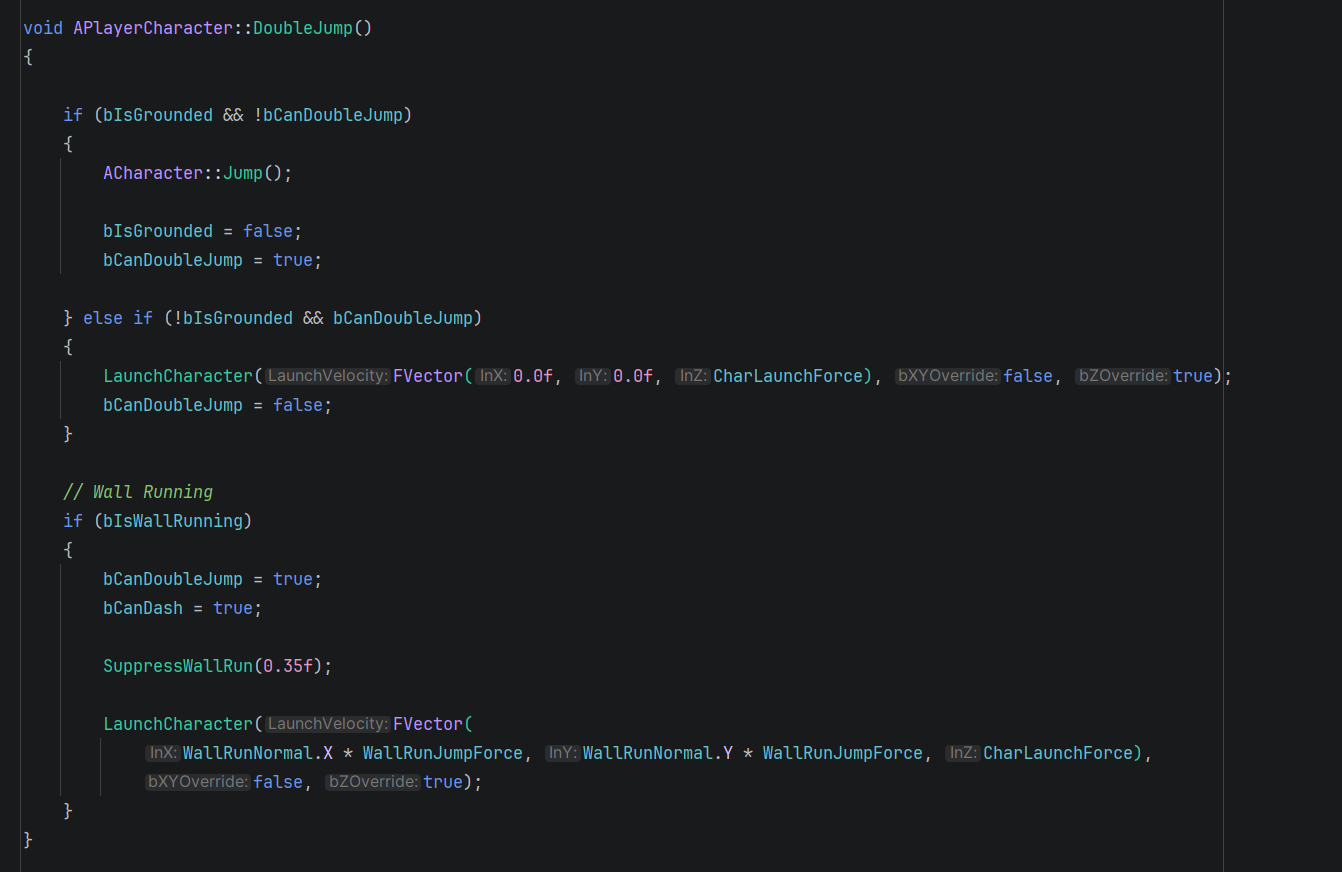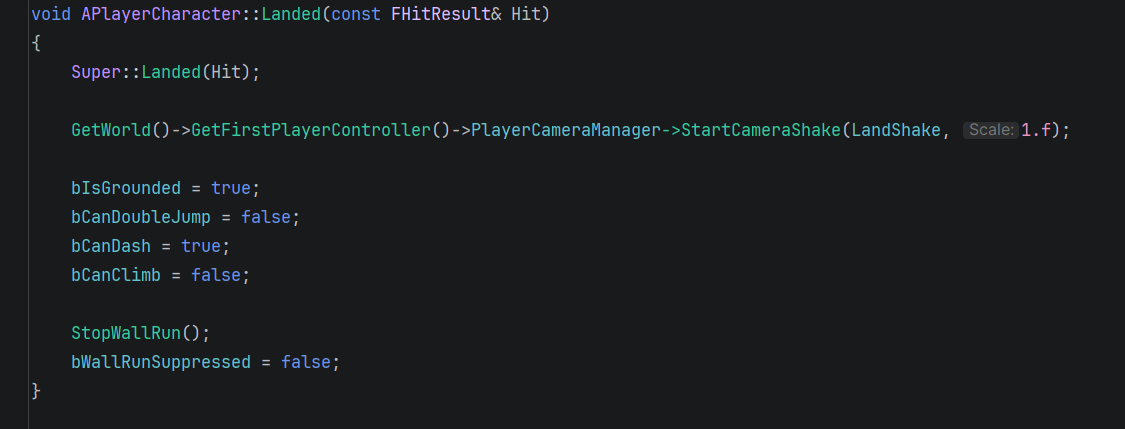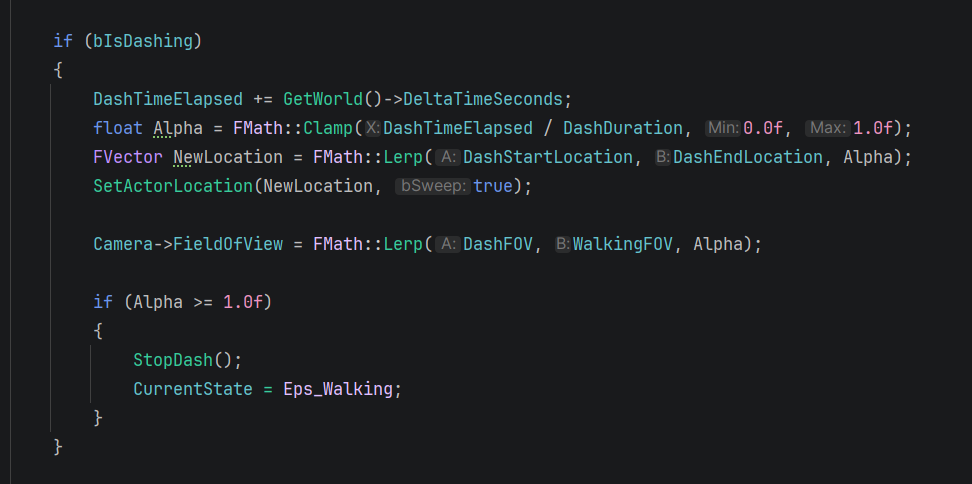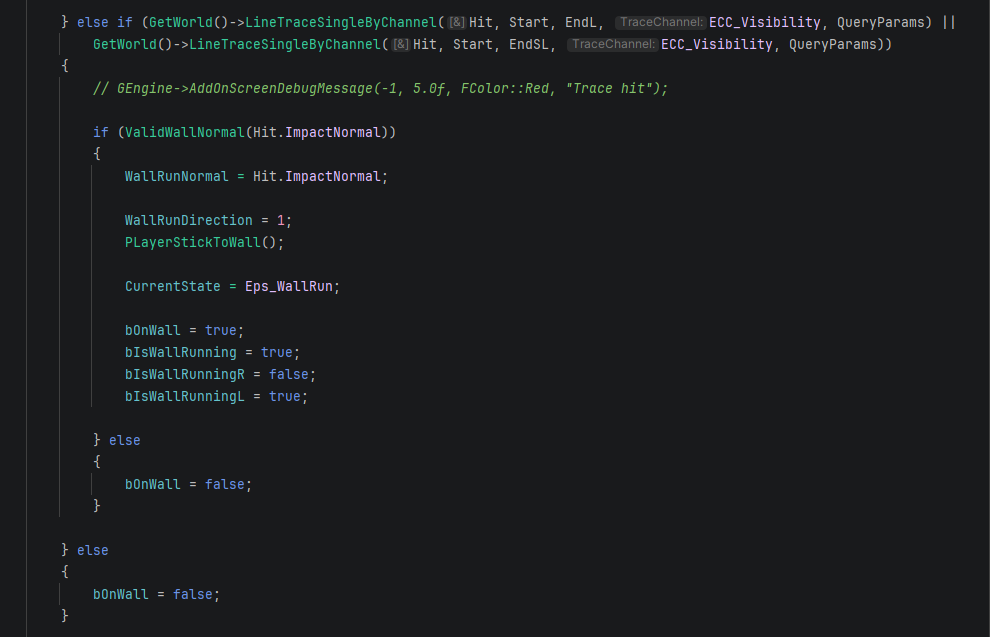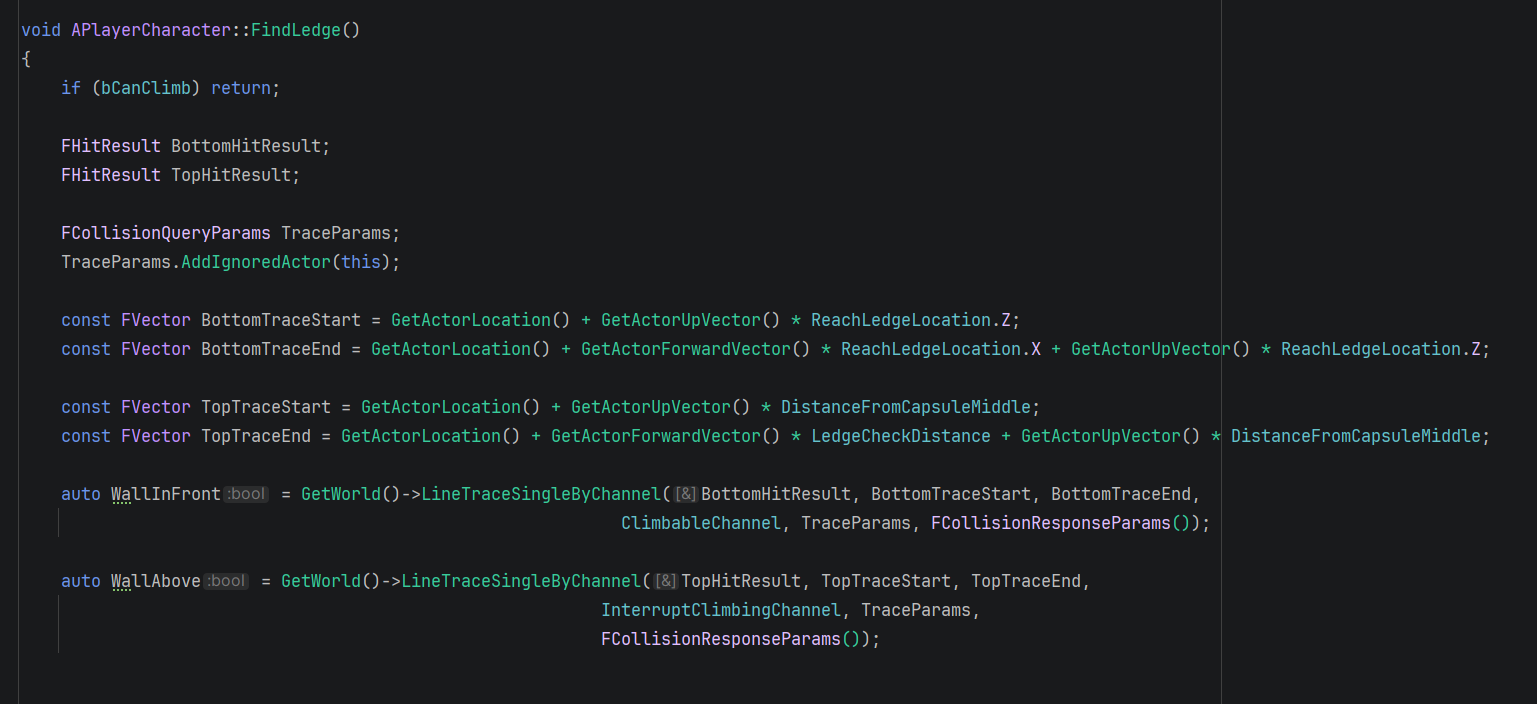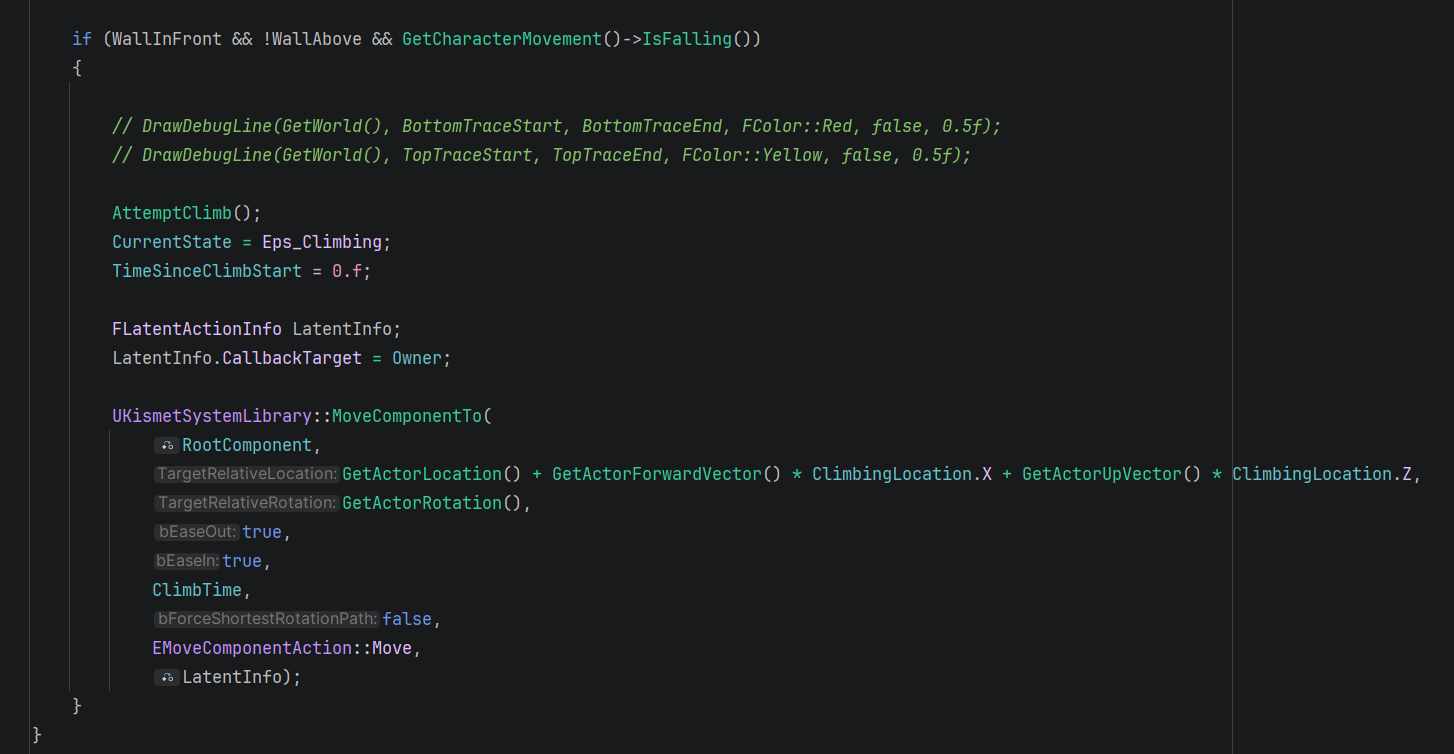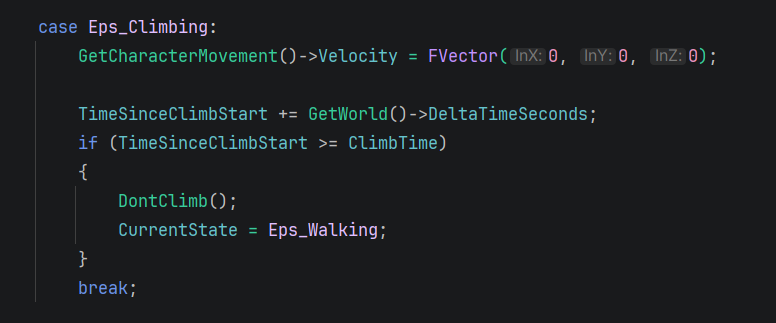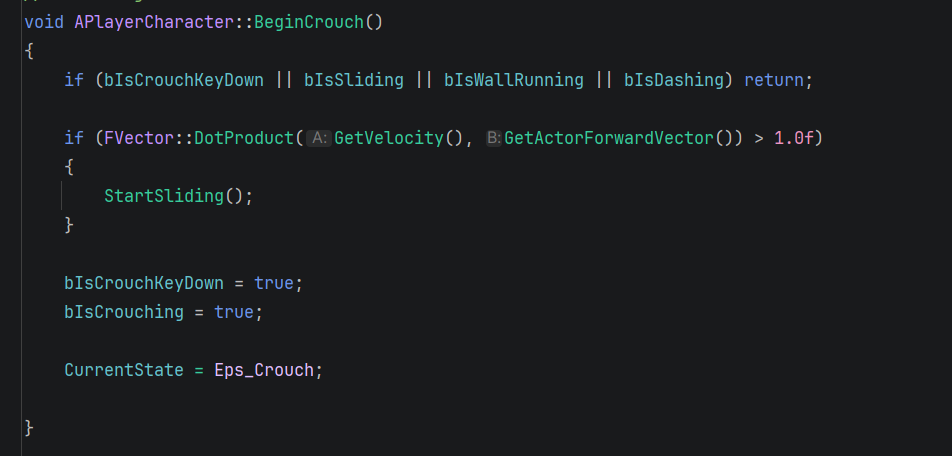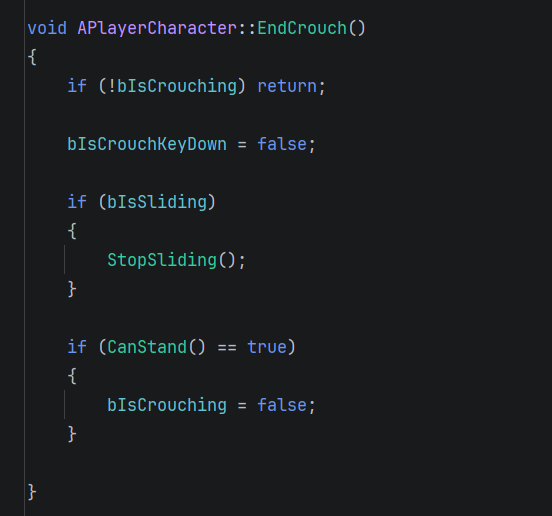
Movement System
This is a custom first-person movement system I built in Unreal Engine 5 using C++ as my graduation project.
It's made to feel smooth, responsive, and fluid, with mechanics like double jump, dash, wall-running, ledge climbing, crouching, and sliding.
The goal was to create a movement setup that feels great to control and can easily be expanded with new abilities or traversal options.
